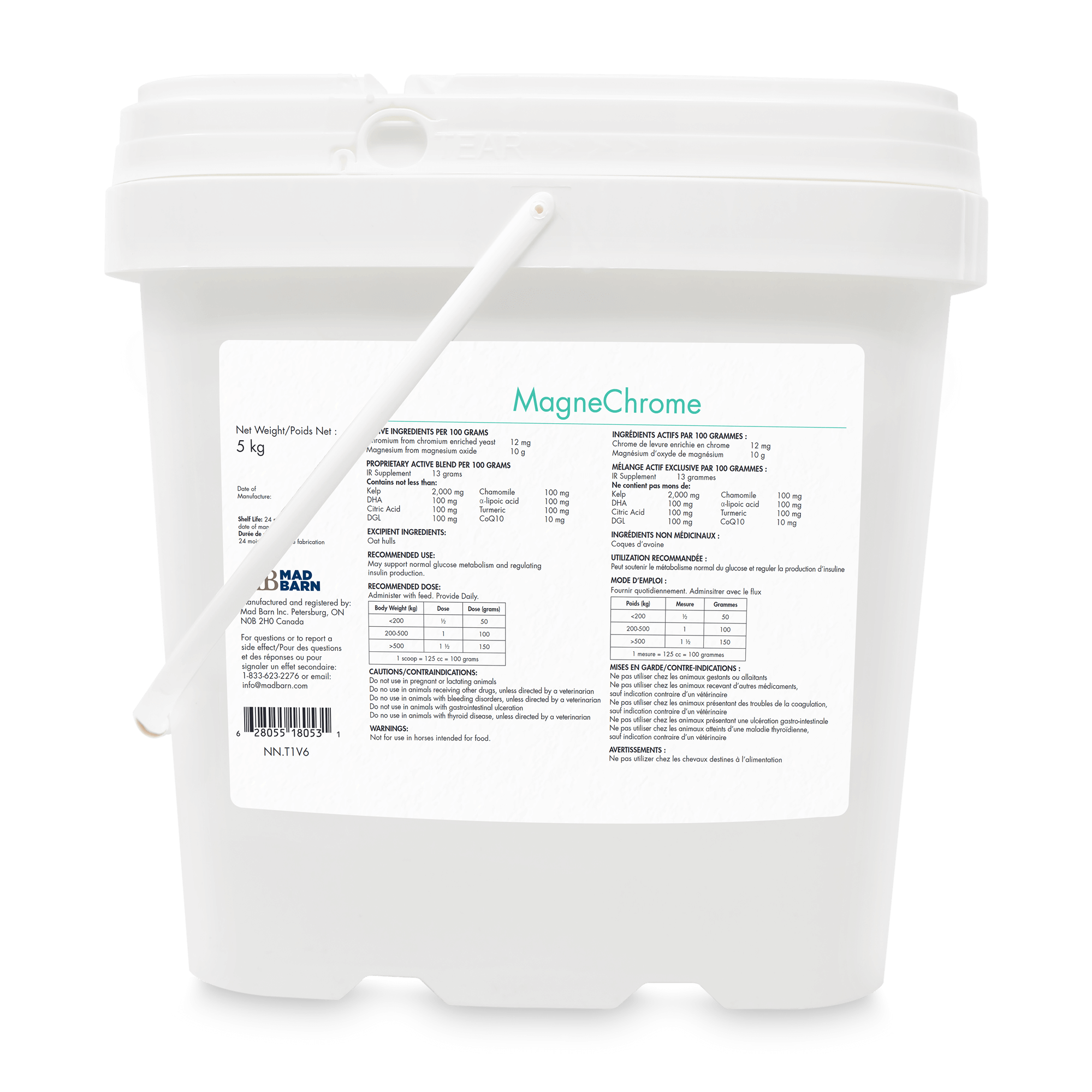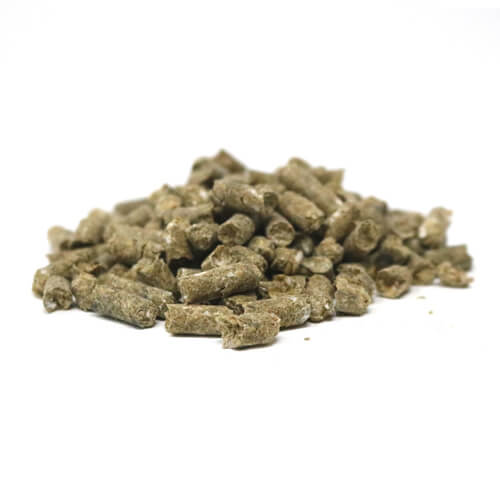MagneChrome (formerly IR Supplement) is a pelleted formula with chromium yeast, magnesium, turmeric, CoQ10 and more. MagneChrome is designed to support normal glucose metabolism and regulate insulin production. This supplement provides antioxidant and anti-inflammatory support which is critical for horses with metabolic conditions such as insulin resistance, laminitis and Cushing’s Syndrome (PPID). MagneChrome should be fed with our Omneity complete mineral and vitamin.
- This product is not available for shipment to California






 Algal DHA (LG-MAX) is a DHA supplement developed by Alltech that is derived from marine algae. It provides high levels of DHA comparable to fish oil without having a fishy smell or taste, so horses find it extremely palatable.
Algal DHA (LG-MAX) is a DHA supplement developed by Alltech that is derived from marine algae. It provides high levels of DHA comparable to fish oil without having a fishy smell or taste, so horses find it extremely palatable. Calcium is a macromineral with well described roles in bones and teeth development in horses. Calcium and phosphorus are usually discussed together because bones store them in a 2:1 ratio of calcium-to-phosphorus. This ratio should also be attained in the diet.
Calcium is a macromineral with well described roles in bones and teeth development in horses. Calcium and phosphorus are usually discussed together because bones store them in a 2:1 ratio of calcium-to-phosphorus. This ratio should also be attained in the diet.  Chamomile is the common name for several daisy-like plants of the Asteraceae family. It is an annual herb with white flowers and feathery leaves.
Chamomile is the common name for several daisy-like plants of the Asteraceae family. It is an annual herb with white flowers and feathery leaves. Chromium is a micromineral that is widely used in horses with metabolic dysfunction because it has been shown to potentiate the effects of insulin. Mad Barn uses Biochrome in its supplements, which contains this mineral in the form of chromium polynicotinate. The chromium is surrounded by several niacin molecules which increase absorption.
Chromium is a micromineral that is widely used in horses with metabolic dysfunction because it has been shown to potentiate the effects of insulin. Mad Barn uses Biochrome in its supplements, which contains this mineral in the form of chromium polynicotinate. The chromium is surrounded by several niacin molecules which increase absorption. Coenzyme Q10 (CoQ10, ubiquinone) is a natural antioxidant that is involved in energy metabolism in the cell mitochondria. It plays several important roles in the body and is critical for the production of adenosine triphosphate (ATP) – the primary energy currency used within the body.
Coenzyme Q10 (CoQ10, ubiquinone) is a natural antioxidant that is involved in energy metabolism in the cell mitochondria. It plays several important roles in the body and is critical for the production of adenosine triphosphate (ATP) – the primary energy currency used within the body.
 Licorice root is an herb that has long been used in Chinese medicine, said to promote overall well-being and vitality. It is very well documented by research and contains a number of active ingredients.
Licorice root is an herb that has long been used in Chinese medicine, said to promote overall well-being and vitality. It is very well documented by research and contains a number of active ingredients. Lipoic Acid is an important natural antioxidant molecule that has a synergistic effect with Vitamin C, Vitamin E, and Coenzyme Q10. It is unique because it is both water- and fat-soluble. In research on horses, it has been shown to moderately reduce oxidative stress under conditions of light activity.
Lipoic Acid is an important natural antioxidant molecule that has a synergistic effect with Vitamin C, Vitamin E, and Coenzyme Q10. It is unique because it is both water- and fat-soluble. In research on horses, it has been shown to moderately reduce oxidative stress under conditions of light activity.

 Turmeric, Curcuma longa, is a flowering plant that is a member of the ginger family. Its roots are most commonly found dried and made into a powder, which has been used for many years in ancient Indian and Chinese medicines. Recently, it has been introduced in horse nutrition as a herbal supplement to assist in the management of pain and arthritis.
Turmeric, Curcuma longa, is a flowering plant that is a member of the ginger family. Its roots are most commonly found dried and made into a powder, which has been used for many years in ancient Indian and Chinese medicines. Recently, it has been introduced in horse nutrition as a herbal supplement to assist in the management of pain and arthritis.






